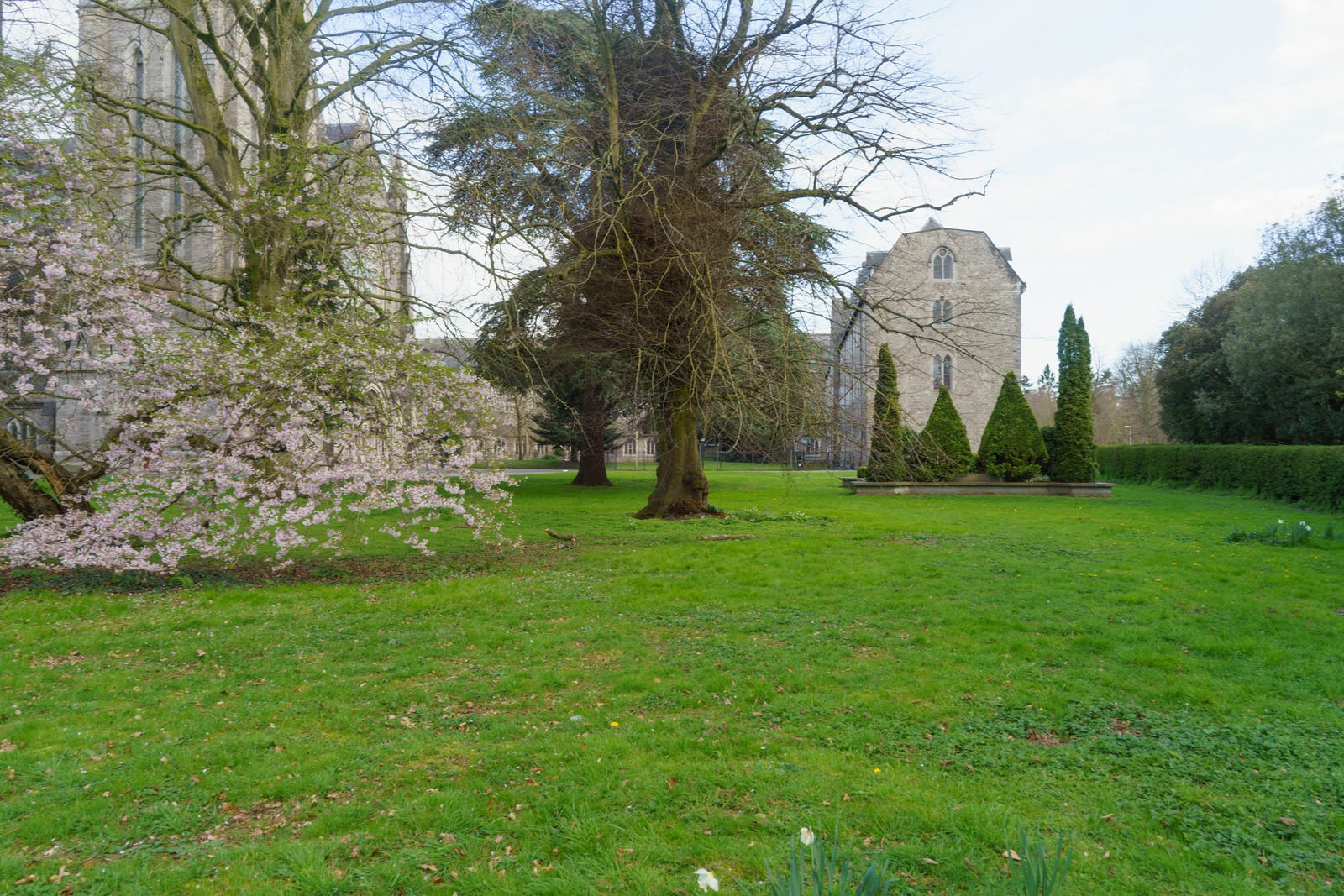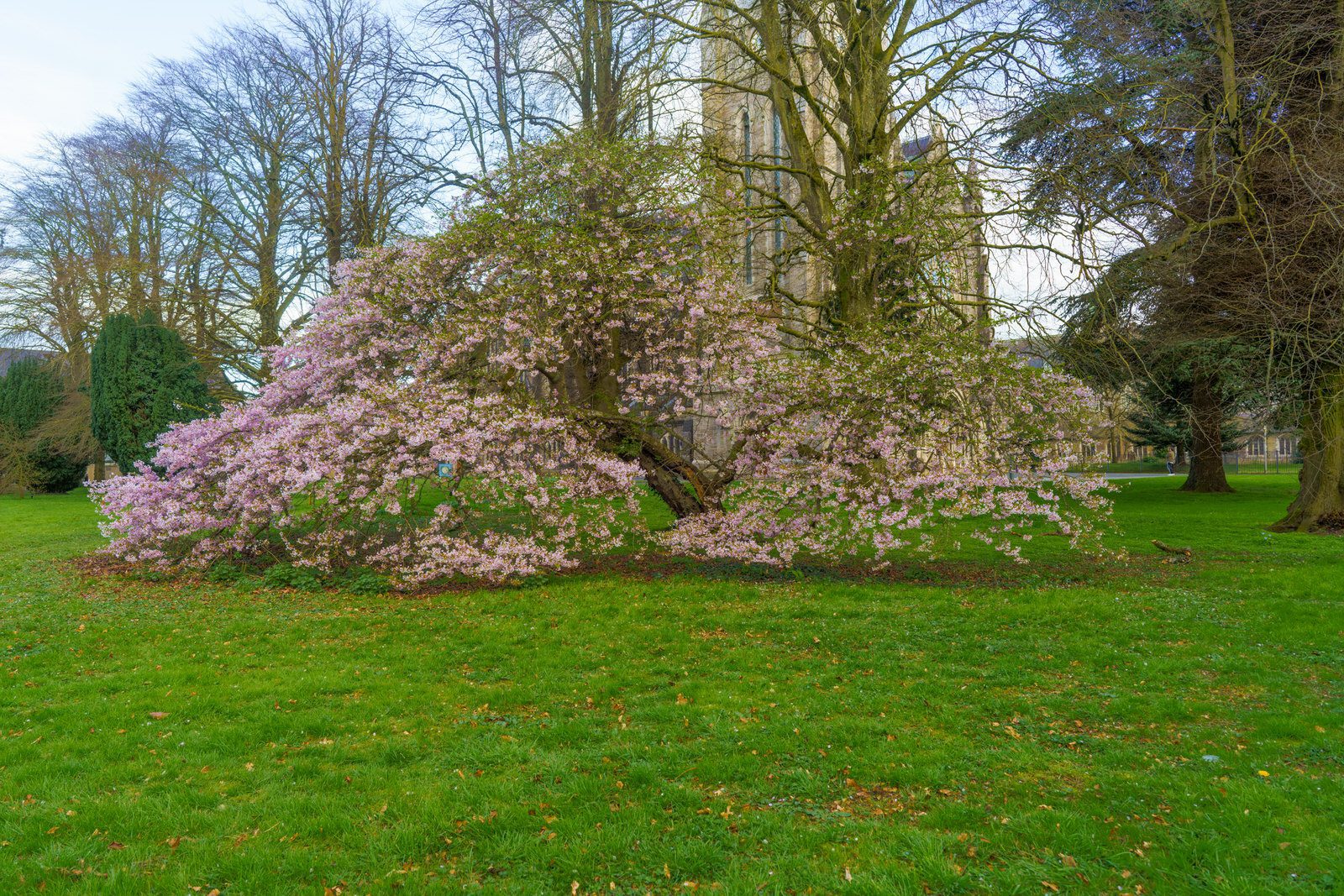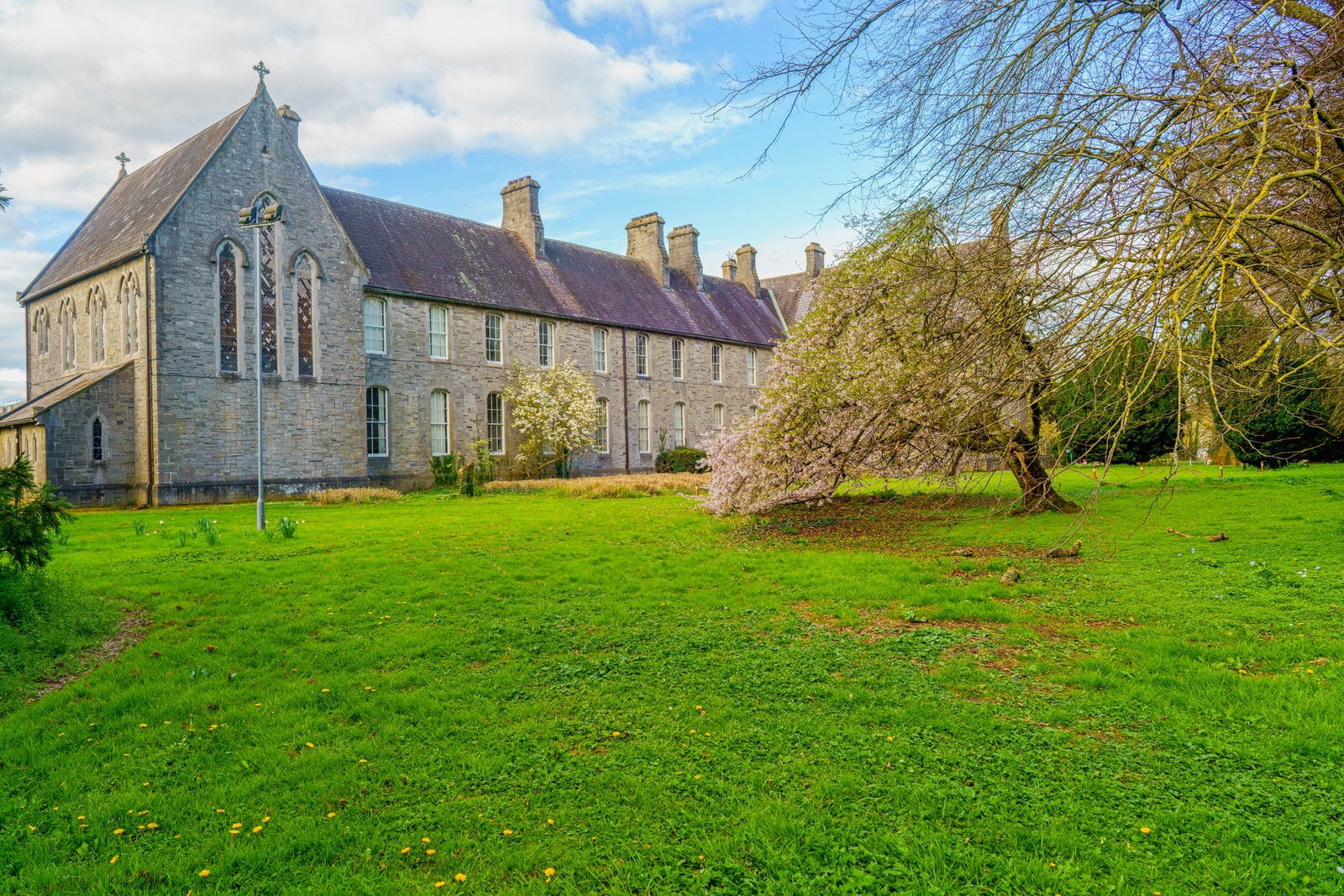AND PHOTOGRAPHED AT RANDOM USING AN OLD CANON DSLR
Dorset Street is an important thoroughfare on the north side of Dublin, Ireland, and was originally part of the Slighe Midh-Luchra, Dublin’s ancient road to the north that begins where the original bridging point at Church Street is today. Subsequently, yet prior to the street being given its current name in the 18th century, the road was known as Drumcondra Lane and was shown on maps as such. It is divided into Dorset Street Lower (northeast end) and Dorset Street Upper (southwest end).
The street runs north east from Bolton Street at Dominick Street junction, north of Parnell Square and Mountjoy Square, and leads into Drumcondra Road at Binn’s Bridge on the Royal Canal. It makes up part of the most common route from Dublin Airport to the city centre, and the R132 regional road follows Dorset Street for part of its route. It meets the R135 route at the junctions with Blessington Street, location of the Blessington Street Basin, and St. Mary’s Place; other major roads feeding onto this spine street include North Circular Road, Gardiner Street, Eccles Street, North Frederick Street, and Granby Row.
Physically the street rises up from the Liffey valley at its south western end to its apex at roughly where it meets with Blessington and North Frederick Streets; proceeding north-west the street slopes down again on the approach to Binn’s Bridge at the Royal Canal.
Some early Georgian houses are dotted along the street, primarily identifiable by the stone Gibbsian doorcase entrances, and close to the crossroads with Blessington and North Frederick Streets. Much of the street redeveloped during the Victorian era, with a number of significant buildings built, such as the Gothic style stone-built Dominican priory, designed by J. L. Robinson in 1884–87 at the corner of Dominick Street, while across from it is the red brick Italianette former fire station, designed by C. J. McCarthy and completed in 1903. Much of the street consists of vernacular Victorian terraces, with shops opening straight onto footpaths at ground-floor level. During the latter part of the twentieth century, stretches of the street were again redeveloped by Dublin Corporation for social housing flat complexes near Dominick Street.
![I WALKED ALONG DORSET STREET AT ABOUT 3PM [AND PHOTOGRAPHED AT RANDOM USING AN OLD CANON DSLR]-218252-1 I WALKED ALONG DORSET STREET AT ABOUT 3PM 001](https://excellentstreetimages.com/2023HeadlessPhotoBlogWordPress/wp-content/uploads/2023/06/I-WALKED-ALONG-DORSET-STREET-AT-ABOUT-3PM-AND-PHOTOGRAPHED-AT-RANDOM-USING-AN-OLD-CANON-DSLR-218252-1-1600x1066.jpg)
![I WALKED ALONG DORSET STREET AT ABOUT 3PM [AND PHOTOGRAPHED AT RANDOM USING AN OLD CANON DSLR]-218217-1 I WALKED ALONG DORSET STREET AT ABOUT 3PM 002](https://excellentstreetimages.com/2023HeadlessPhotoBlogWordPress/wp-content/uploads/2023/06/I-WALKED-ALONG-DORSET-STREET-AT-ABOUT-3PM-AND-PHOTOGRAPHED-AT-RANDOM-USING-AN-OLD-CANON-DSLR-218217-1-1167x778.jpg)
![I WALKED ALONG DORSET STREET AT ABOUT 3PM [AND PHOTOGRAPHED AT RANDOM USING AN OLD CANON DSLR]-218249-1 I WALKED ALONG DORSET STREET AT ABOUT 3PM 003](https://excellentstreetimages.com/2023HeadlessPhotoBlogWordPress/wp-content/uploads/2023/06/I-WALKED-ALONG-DORSET-STREET-AT-ABOUT-3PM-AND-PHOTOGRAPHED-AT-RANDOM-USING-AN-OLD-CANON-DSLR-218249-1-1600x1066.jpg)
![I WALKED ALONG DORSET STREET AT ABOUT 3PM [AND PHOTOGRAPHED AT RANDOM USING AN OLD CANON DSLR]-218248-1 I WALKED ALONG DORSET STREET AT ABOUT 3PM 004](https://excellentstreetimages.com/2023HeadlessPhotoBlogWordPress/wp-content/uploads/2023/06/I-WALKED-ALONG-DORSET-STREET-AT-ABOUT-3PM-AND-PHOTOGRAPHED-AT-RANDOM-USING-AN-OLD-CANON-DSLR-218248-1-1600x1066.jpg)
![I WALKED ALONG DORSET STREET AT ABOUT 3PM [AND PHOTOGRAPHED AT RANDOM USING AN OLD CANON DSLR]-218218-1 I WALKED ALONG DORSET STREET AT ABOUT 3PM 005](https://excellentstreetimages.com/2023HeadlessPhotoBlogWordPress/wp-content/uploads/2023/06/I-WALKED-ALONG-DORSET-STREET-AT-ABOUT-3PM-AND-PHOTOGRAPHED-AT-RANDOM-USING-AN-OLD-CANON-DSLR-218218-1-1600x1066.jpg)
![I WALKED ALONG DORSET STREET AT ABOUT 3PM [AND PHOTOGRAPHED AT RANDOM USING AN OLD CANON DSLR]-218227-1 I WALKED ALONG DORSET STREET AT ABOUT 3PM 006](https://excellentstreetimages.com/2023HeadlessPhotoBlogWordPress/wp-content/uploads/2023/06/I-WALKED-ALONG-DORSET-STREET-AT-ABOUT-3PM-AND-PHOTOGRAPHED-AT-RANDOM-USING-AN-OLD-CANON-DSLR-218227-1-1600x1066.jpg)
![I WALKED ALONG DORSET STREET AT ABOUT 3PM [AND PHOTOGRAPHED AT RANDOM USING AN OLD CANON DSLR]-218215-1 I WALKED ALONG DORSET STREET AT ABOUT 3PM 007](https://excellentstreetimages.com/2023HeadlessPhotoBlogWordPress/wp-content/uploads/2023/06/I-WALKED-ALONG-DORSET-STREET-AT-ABOUT-3PM-AND-PHOTOGRAPHED-AT-RANDOM-USING-AN-OLD-CANON-DSLR-218215-1-943x629.jpg)
![I WALKED ALONG DORSET STREET AT ABOUT 3PM [AND PHOTOGRAPHED AT RANDOM USING AN OLD CANON DSLR]-218250-1 I WALKED ALONG DORSET STREET AT ABOUT 3PM 008](https://excellentstreetimages.com/2023HeadlessPhotoBlogWordPress/wp-content/uploads/2023/06/I-WALKED-ALONG-DORSET-STREET-AT-ABOUT-3PM-AND-PHOTOGRAPHED-AT-RANDOM-USING-AN-OLD-CANON-DSLR-218250-1-1600x1066.jpg)
![I WALKED ALONG DORSET STREET AT ABOUT 3PM [AND PHOTOGRAPHED AT RANDOM USING AN OLD CANON DSLR]-218201-1 I WALKED ALONG DORSET STREET AT ABOUT 3PM 009](https://excellentstreetimages.com/2023HeadlessPhotoBlogWordPress/wp-content/uploads/2023/06/I-WALKED-ALONG-DORSET-STREET-AT-ABOUT-3PM-AND-PHOTOGRAPHED-AT-RANDOM-USING-AN-OLD-CANON-DSLR-218201-1-1600x1066.jpg)
![I WALKED ALONG DORSET STREET AT ABOUT 3PM [AND PHOTOGRAPHED AT RANDOM USING AN OLD CANON DSLR]-218208-1 I WALKED ALONG DORSET STREET AT ABOUT 3PM 010](https://excellentstreetimages.com/2023HeadlessPhotoBlogWordPress/wp-content/uploads/2023/06/I-WALKED-ALONG-DORSET-STREET-AT-ABOUT-3PM-AND-PHOTOGRAPHED-AT-RANDOM-USING-AN-OLD-CANON-DSLR-218208-1-1600x1066.jpg)
![I WALKED ALONG DORSET STREET AT ABOUT 3PM [AND PHOTOGRAPHED AT RANDOM USING AN OLD CANON DSLR]-218214-1 I WALKED ALONG DORSET STREET AT ABOUT 3PM 011](https://excellentstreetimages.com/2023HeadlessPhotoBlogWordPress/wp-content/uploads/2023/06/I-WALKED-ALONG-DORSET-STREET-AT-ABOUT-3PM-AND-PHOTOGRAPHED-AT-RANDOM-USING-AN-OLD-CANON-DSLR-218214-1-1600x1066.jpg)
![I WALKED ALONG DORSET STREET AT ABOUT 3PM [AND PHOTOGRAPHED AT RANDOM USING AN OLD CANON DSLR]-218225-1 I WALKED ALONG DORSET STREET AT ABOUT 3PM 012](https://excellentstreetimages.com/2023HeadlessPhotoBlogWordPress/wp-content/uploads/2023/06/I-WALKED-ALONG-DORSET-STREET-AT-ABOUT-3PM-AND-PHOTOGRAPHED-AT-RANDOM-USING-AN-OLD-CANON-DSLR-218225-1-1600x1066.jpg)
![I WALKED ALONG DORSET STREET AT ABOUT 3PM [AND PHOTOGRAPHED AT RANDOM USING AN OLD CANON DSLR]-218211-1 I WALKED ALONG DORSET STREET AT ABOUT 3PM 013](https://excellentstreetimages.com/2023HeadlessPhotoBlogWordPress/wp-content/uploads/2023/06/I-WALKED-ALONG-DORSET-STREET-AT-ABOUT-3PM-AND-PHOTOGRAPHED-AT-RANDOM-USING-AN-OLD-CANON-DSLR-218211-1-1600x1066.jpg)
![I WALKED ALONG DORSET STREET AT ABOUT 3PM [AND PHOTOGRAPHED AT RANDOM USING AN OLD CANON DSLR]-218233-1 I WALKED ALONG DORSET STREET AT ABOUT 3PM 014](https://excellentstreetimages.com/2023HeadlessPhotoBlogWordPress/wp-content/uploads/2023/06/I-WALKED-ALONG-DORSET-STREET-AT-ABOUT-3PM-AND-PHOTOGRAPHED-AT-RANDOM-USING-AN-OLD-CANON-DSLR-218233-1-1600x1066.jpg)
![I WALKED ALONG DORSET STREET AT ABOUT 3PM [AND PHOTOGRAPHED AT RANDOM USING AN OLD CANON DSLR]-218204-1 I WALKED ALONG DORSET STREET AT ABOUT 3PM 015](https://excellentstreetimages.com/2023HeadlessPhotoBlogWordPress/wp-content/uploads/2023/06/I-WALKED-ALONG-DORSET-STREET-AT-ABOUT-3PM-AND-PHOTOGRAPHED-AT-RANDOM-USING-AN-OLD-CANON-DSLR-218204-1-1600x1066.jpg)
![I WALKED ALONG DORSET STREET AT ABOUT 3PM [AND PHOTOGRAPHED AT RANDOM USING AN OLD CANON DSLR]-218235-1 I WALKED ALONG DORSET STREET AT ABOUT 3PM 016](https://excellentstreetimages.com/2023HeadlessPhotoBlogWordPress/wp-content/uploads/2023/06/I-WALKED-ALONG-DORSET-STREET-AT-ABOUT-3PM-AND-PHOTOGRAPHED-AT-RANDOM-USING-AN-OLD-CANON-DSLR-218235-1-1600x1066.jpg)
![I WALKED ALONG DORSET STREET AT ABOUT 3PM [AND PHOTOGRAPHED AT RANDOM USING AN OLD CANON DSLR]-218212-1 I WALKED ALONG DORSET STREET AT ABOUT 3PM 017](https://excellentstreetimages.com/2023HeadlessPhotoBlogWordPress/wp-content/uploads/2023/06/I-WALKED-ALONG-DORSET-STREET-AT-ABOUT-3PM-AND-PHOTOGRAPHED-AT-RANDOM-USING-AN-OLD-CANON-DSLR-218212-1-1600x1066.jpg)
![I WALKED ALONG DORSET STREET AT ABOUT 3PM [AND PHOTOGRAPHED AT RANDOM USING AN OLD CANON DSLR]-218221-1 I WALKED ALONG DORSET STREET AT ABOUT 3PM 018](https://excellentstreetimages.com/2023HeadlessPhotoBlogWordPress/wp-content/uploads/2023/06/I-WALKED-ALONG-DORSET-STREET-AT-ABOUT-3PM-AND-PHOTOGRAPHED-AT-RANDOM-USING-AN-OLD-CANON-DSLR-218221-1-1600x1066.jpg)
![I WALKED ALONG DORSET STREET AT ABOUT 3PM [AND PHOTOGRAPHED AT RANDOM USING AN OLD CANON DSLR]-218205-1 I WALKED ALONG DORSET STREET AT ABOUT 3PM 019](https://excellentstreetimages.com/2023HeadlessPhotoBlogWordPress/wp-content/uploads/2023/06/I-WALKED-ALONG-DORSET-STREET-AT-ABOUT-3PM-AND-PHOTOGRAPHED-AT-RANDOM-USING-AN-OLD-CANON-DSLR-218205-1-1600x1066.jpg)
![I WALKED ALONG DORSET STREET AT ABOUT 3PM [AND PHOTOGRAPHED AT RANDOM USING AN OLD CANON DSLR]-218220-1 I WALKED ALONG DORSET STREET AT ABOUT 3PM 020](https://excellentstreetimages.com/2023HeadlessPhotoBlogWordPress/wp-content/uploads/2023/06/I-WALKED-ALONG-DORSET-STREET-AT-ABOUT-3PM-AND-PHOTOGRAPHED-AT-RANDOM-USING-AN-OLD-CANON-DSLR-218220-1-1600x1066.jpg)
![I WALKED ALONG DORSET STREET AT ABOUT 3PM [AND PHOTOGRAPHED AT RANDOM USING AN OLD CANON DSLR]-218232-1 I WALKED ALONG DORSET STREET AT ABOUT 3PM 021](https://excellentstreetimages.com/2023HeadlessPhotoBlogWordPress/wp-content/uploads/2023/06/I-WALKED-ALONG-DORSET-STREET-AT-ABOUT-3PM-AND-PHOTOGRAPHED-AT-RANDOM-USING-AN-OLD-CANON-DSLR-218232-1-1600x1066.jpg)
![I WALKED ALONG DORSET STREET AT ABOUT 3PM [AND PHOTOGRAPHED AT RANDOM USING AN OLD CANON DSLR]-218223-1 I WALKED ALONG DORSET STREET AT ABOUT 3PM 022](https://excellentstreetimages.com/2023HeadlessPhotoBlogWordPress/wp-content/uploads/2023/06/I-WALKED-ALONG-DORSET-STREET-AT-ABOUT-3PM-AND-PHOTOGRAPHED-AT-RANDOM-USING-AN-OLD-CANON-DSLR-218223-1-1600x1066.jpg)
![I WALKED ALONG DORSET STREET AT ABOUT 3PM [AND PHOTOGRAPHED AT RANDOM USING AN OLD CANON DSLR]-218240-1 I WALKED ALONG DORSET STREET AT ABOUT 3PM 023](https://excellentstreetimages.com/2023HeadlessPhotoBlogWordPress/wp-content/uploads/2023/06/I-WALKED-ALONG-DORSET-STREET-AT-ABOUT-3PM-AND-PHOTOGRAPHED-AT-RANDOM-USING-AN-OLD-CANON-DSLR-218240-1-1600x1066.jpg)
![I WALKED ALONG DORSET STREET AT ABOUT 3PM [AND PHOTOGRAPHED AT RANDOM USING AN OLD CANON DSLR]-218222-1 I WALKED ALONG DORSET STREET AT ABOUT 3PM 024](https://excellentstreetimages.com/2023HeadlessPhotoBlogWordPress/wp-content/uploads/2023/06/I-WALKED-ALONG-DORSET-STREET-AT-ABOUT-3PM-AND-PHOTOGRAPHED-AT-RANDOM-USING-AN-OLD-CANON-DSLR-218222-1-1600x1066.jpg)
![I WALKED ALONG DORSET STREET AT ABOUT 3PM [AND PHOTOGRAPHED AT RANDOM USING AN OLD CANON DSLR]-218246-1 I WALKED ALONG DORSET STREET AT ABOUT 3PM 025](https://excellentstreetimages.com/2023HeadlessPhotoBlogWordPress/wp-content/uploads/2023/06/I-WALKED-ALONG-DORSET-STREET-AT-ABOUT-3PM-AND-PHOTOGRAPHED-AT-RANDOM-USING-AN-OLD-CANON-DSLR-218246-1-1600x1066.jpg)
![I WALKED ALONG DORSET STREET AT ABOUT 3PM [AND PHOTOGRAPHED AT RANDOM USING AN OLD CANON DSLR]-218197-1 I WALKED ALONG DORSET STREET AT ABOUT 3PM 026](https://excellentstreetimages.com/2023HeadlessPhotoBlogWordPress/wp-content/uploads/2023/06/I-WALKED-ALONG-DORSET-STREET-AT-ABOUT-3PM-AND-PHOTOGRAPHED-AT-RANDOM-USING-AN-OLD-CANON-DSLR-218197-1-1600x1066.jpg)
![I WALKED ALONG DORSET STREET AT ABOUT 3PM [AND PHOTOGRAPHED AT RANDOM USING AN OLD CANON DSLR]-218216-1 I WALKED ALONG DORSET STREET AT ABOUT 3PM 027](https://excellentstreetimages.com/2023HeadlessPhotoBlogWordPress/wp-content/uploads/2023/06/I-WALKED-ALONG-DORSET-STREET-AT-ABOUT-3PM-AND-PHOTOGRAPHED-AT-RANDOM-USING-AN-OLD-CANON-DSLR-218216-1-1600x1066.jpg)
![I WALKED ALONG DORSET STREET AT ABOUT 3PM [AND PHOTOGRAPHED AT RANDOM USING AN OLD CANON DSLR]-218226-1 I WALKED ALONG DORSET STREET AT ABOUT 3PM 028](https://excellentstreetimages.com/2023HeadlessPhotoBlogWordPress/wp-content/uploads/2023/06/I-WALKED-ALONG-DORSET-STREET-AT-ABOUT-3PM-AND-PHOTOGRAPHED-AT-RANDOM-USING-AN-OLD-CANON-DSLR-218226-1-1600x1066.jpg)
![I WALKED ALONG DORSET STREET AT ABOUT 3PM [AND PHOTOGRAPHED AT RANDOM USING AN OLD CANON DSLR]-218239-1 I WALKED ALONG DORSET STREET AT ABOUT 3PM 029](https://excellentstreetimages.com/2023HeadlessPhotoBlogWordPress/wp-content/uploads/2023/06/I-WALKED-ALONG-DORSET-STREET-AT-ABOUT-3PM-AND-PHOTOGRAPHED-AT-RANDOM-USING-AN-OLD-CANON-DSLR-218239-1-1600x1066.jpg)
![I WALKED ALONG DORSET STREET AT ABOUT 3PM [AND PHOTOGRAPHED AT RANDOM USING AN OLD CANON DSLR]-218224-1 I WALKED ALONG DORSET STREET AT ABOUT 3PM 030](https://excellentstreetimages.com/2023HeadlessPhotoBlogWordPress/wp-content/uploads/2023/06/I-WALKED-ALONG-DORSET-STREET-AT-ABOUT-3PM-AND-PHOTOGRAPHED-AT-RANDOM-USING-AN-OLD-CANON-DSLR-218224-1-1600x1066.jpg)
![I WALKED ALONG DORSET STREET AT ABOUT 3PM [AND PHOTOGRAPHED AT RANDOM USING AN OLD CANON DSLR]-218247-1 I WALKED ALONG DORSET STREET AT ABOUT 3PM 031](https://excellentstreetimages.com/2023HeadlessPhotoBlogWordPress/wp-content/uploads/2023/06/I-WALKED-ALONG-DORSET-STREET-AT-ABOUT-3PM-AND-PHOTOGRAPHED-AT-RANDOM-USING-AN-OLD-CANON-DSLR-218247-1-1600x1066.jpg)
![I WALKED ALONG DORSET STREET AT ABOUT 3PM [AND PHOTOGRAPHED AT RANDOM USING AN OLD CANON DSLR]-218231-1 I WALKED ALONG DORSET STREET AT ABOUT 3PM 032](https://excellentstreetimages.com/2023HeadlessPhotoBlogWordPress/wp-content/uploads/2023/06/I-WALKED-ALONG-DORSET-STREET-AT-ABOUT-3PM-AND-PHOTOGRAPHED-AT-RANDOM-USING-AN-OLD-CANON-DSLR-218231-1-1600x1066.jpg)
![I WALKED ALONG DORSET STREET AT ABOUT 3PM [AND PHOTOGRAPHED AT RANDOM USING AN OLD CANON DSLR]-218230-1 I WALKED ALONG DORSET STREET AT ABOUT 3PM 033](https://excellentstreetimages.com/2023HeadlessPhotoBlogWordPress/wp-content/uploads/2023/06/I-WALKED-ALONG-DORSET-STREET-AT-ABOUT-3PM-AND-PHOTOGRAPHED-AT-RANDOM-USING-AN-OLD-CANON-DSLR-218230-1-1600x1066.jpg)
![I WALKED ALONG DORSET STREET AT ABOUT 3PM [AND PHOTOGRAPHED AT RANDOM USING AN OLD CANON DSLR]-218238-1 I WALKED ALONG DORSET STREET AT ABOUT 3PM 034](https://excellentstreetimages.com/2023HeadlessPhotoBlogWordPress/wp-content/uploads/2023/06/I-WALKED-ALONG-DORSET-STREET-AT-ABOUT-3PM-AND-PHOTOGRAPHED-AT-RANDOM-USING-AN-OLD-CANON-DSLR-218238-1-1600x1066.jpg)
![I WALKED ALONG DORSET STREET AT ABOUT 3PM [AND PHOTOGRAPHED AT RANDOM USING AN OLD CANON DSLR]-218244-1 I WALKED ALONG DORSET STREET AT ABOUT 3PM 035](https://excellentstreetimages.com/2023HeadlessPhotoBlogWordPress/wp-content/uploads/2023/06/I-WALKED-ALONG-DORSET-STREET-AT-ABOUT-3PM-AND-PHOTOGRAPHED-AT-RANDOM-USING-AN-OLD-CANON-DSLR-218244-1-1600x1066.jpg)
![I WALKED ALONG DORSET STREET AT ABOUT 3PM [AND PHOTOGRAPHED AT RANDOM USING AN OLD CANON DSLR]-218202-1 I WALKED ALONG DORSET STREET AT ABOUT 3PM 036](https://excellentstreetimages.com/2023HeadlessPhotoBlogWordPress/wp-content/uploads/2023/06/I-WALKED-ALONG-DORSET-STREET-AT-ABOUT-3PM-AND-PHOTOGRAPHED-AT-RANDOM-USING-AN-OLD-CANON-DSLR-218202-1-1600x1066.jpg)
![I WALKED ALONG DORSET STREET AT ABOUT 3PM [AND PHOTOGRAPHED AT RANDOM USING AN OLD CANON DSLR]-218237-1 I WALKED ALONG DORSET STREET AT ABOUT 3PM 037](https://excellentstreetimages.com/2023HeadlessPhotoBlogWordPress/wp-content/uploads/2023/06/I-WALKED-ALONG-DORSET-STREET-AT-ABOUT-3PM-AND-PHOTOGRAPHED-AT-RANDOM-USING-AN-OLD-CANON-DSLR-218237-1-1600x1066.jpg)
![I WALKED ALONG DORSET STREET AT ABOUT 3PM [AND PHOTOGRAPHED AT RANDOM USING AN OLD CANON DSLR]-218213-1 I WALKED ALONG DORSET STREET AT ABOUT 3PM 038](https://excellentstreetimages.com/2023HeadlessPhotoBlogWordPress/wp-content/uploads/2023/06/I-WALKED-ALONG-DORSET-STREET-AT-ABOUT-3PM-AND-PHOTOGRAPHED-AT-RANDOM-USING-AN-OLD-CANON-DSLR-218213-1-1600x1066.jpg)
![I WALKED ALONG DORSET STREET AT ABOUT 3PM [AND PHOTOGRAPHED AT RANDOM USING AN OLD CANON DSLR]-218236-1 I WALKED ALONG DORSET STREET AT ABOUT 3PM 039](https://excellentstreetimages.com/2023HeadlessPhotoBlogWordPress/wp-content/uploads/2023/06/I-WALKED-ALONG-DORSET-STREET-AT-ABOUT-3PM-AND-PHOTOGRAPHED-AT-RANDOM-USING-AN-OLD-CANON-DSLR-218236-1-1600x1066.jpg)
![I WALKED ALONG DORSET STREET AT ABOUT 3PM [AND PHOTOGRAPHED AT RANDOM USING AN OLD CANON DSLR]-218198-1 I WALKED ALONG DORSET STREET AT ABOUT 3PM 040](https://excellentstreetimages.com/2023HeadlessPhotoBlogWordPress/wp-content/uploads/2023/06/I-WALKED-ALONG-DORSET-STREET-AT-ABOUT-3PM-AND-PHOTOGRAPHED-AT-RANDOM-USING-AN-OLD-CANON-DSLR-218198-1-1600x1066.jpg)
![I WALKED ALONG DORSET STREET AT ABOUT 3PM [AND PHOTOGRAPHED AT RANDOM USING AN OLD CANON DSLR]-218210-1 I WALKED ALONG DORSET STREET AT ABOUT 3PM 041](https://excellentstreetimages.com/2023HeadlessPhotoBlogWordPress/wp-content/uploads/2023/06/I-WALKED-ALONG-DORSET-STREET-AT-ABOUT-3PM-AND-PHOTOGRAPHED-AT-RANDOM-USING-AN-OLD-CANON-DSLR-218210-1-1600x1066.jpg)
![I WALKED ALONG DORSET STREET AT ABOUT 3PM [AND PHOTOGRAPHED AT RANDOM USING AN OLD CANON DSLR]-218207-1 I WALKED ALONG DORSET STREET AT ABOUT 3PM 042](https://excellentstreetimages.com/2023HeadlessPhotoBlogWordPress/wp-content/uploads/2023/06/I-WALKED-ALONG-DORSET-STREET-AT-ABOUT-3PM-AND-PHOTOGRAPHED-AT-RANDOM-USING-AN-OLD-CANON-DSLR-218207-1-1600x1066.jpg)
![I WALKED ALONG DORSET STREET AT ABOUT 3PM [AND PHOTOGRAPHED AT RANDOM USING AN OLD CANON DSLR]-218245-1 I WALKED ALONG DORSET STREET AT ABOUT 3PM 043](https://excellentstreetimages.com/2023HeadlessPhotoBlogWordPress/wp-content/uploads/2023/06/I-WALKED-ALONG-DORSET-STREET-AT-ABOUT-3PM-AND-PHOTOGRAPHED-AT-RANDOM-USING-AN-OLD-CANON-DSLR-218245-1-1600x1066.jpg)
![I WALKED ALONG DORSET STREET AT ABOUT 3PM [AND PHOTOGRAPHED AT RANDOM USING AN OLD CANON DSLR]-218251-1 I WALKED ALONG DORSET STREET AT ABOUT 3PM 044](https://excellentstreetimages.com/2023HeadlessPhotoBlogWordPress/wp-content/uploads/2023/06/I-WALKED-ALONG-DORSET-STREET-AT-ABOUT-3PM-AND-PHOTOGRAPHED-AT-RANDOM-USING-AN-OLD-CANON-DSLR-218251-1-1600x1066.jpg)
![I WALKED ALONG DORSET STREET AT ABOUT 3PM [AND PHOTOGRAPHED AT RANDOM USING AN OLD CANON DSLR]-218243-1 I WALKED ALONG DORSET STREET AT ABOUT 3PM 045](https://excellentstreetimages.com/2023HeadlessPhotoBlogWordPress/wp-content/uploads/2023/06/I-WALKED-ALONG-DORSET-STREET-AT-ABOUT-3PM-AND-PHOTOGRAPHED-AT-RANDOM-USING-AN-OLD-CANON-DSLR-218243-1-1600x1066.jpg)
![I WALKED ALONG DORSET STREET AT ABOUT 3PM [AND PHOTOGRAPHED AT RANDOM USING AN OLD CANON DSLR]-218209-1 I WALKED ALONG DORSET STREET AT ABOUT 3PM 046](https://excellentstreetimages.com/2023HeadlessPhotoBlogWordPress/wp-content/uploads/2023/06/I-WALKED-ALONG-DORSET-STREET-AT-ABOUT-3PM-AND-PHOTOGRAPHED-AT-RANDOM-USING-AN-OLD-CANON-DSLR-218209-1-1600x1066.jpg)
![I WALKED ALONG DORSET STREET AT ABOUT 3PM [AND PHOTOGRAPHED AT RANDOM USING AN OLD CANON DSLR]-218242-1 I WALKED ALONG DORSET STREET AT ABOUT 3PM 047](https://excellentstreetimages.com/2023HeadlessPhotoBlogWordPress/wp-content/uploads/2023/06/I-WALKED-ALONG-DORSET-STREET-AT-ABOUT-3PM-AND-PHOTOGRAPHED-AT-RANDOM-USING-AN-OLD-CANON-DSLR-218242-1-1600x1066.jpg)
![I WALKED ALONG DORSET STREET AT ABOUT 3PM [AND PHOTOGRAPHED AT RANDOM USING AN OLD CANON DSLR]-218219-1 I WALKED ALONG DORSET STREET AT ABOUT 3PM 048](https://excellentstreetimages.com/2023HeadlessPhotoBlogWordPress/wp-content/uploads/2023/06/I-WALKED-ALONG-DORSET-STREET-AT-ABOUT-3PM-AND-PHOTOGRAPHED-AT-RANDOM-USING-AN-OLD-CANON-DSLR-218219-1-1600x1066.jpg)
![I WALKED ALONG DORSET STREET AT ABOUT 3PM [AND PHOTOGRAPHED AT RANDOM USING AN OLD CANON DSLR]-218196-1 I WALKED ALONG DORSET STREET AT ABOUT 3PM 049](https://excellentstreetimages.com/2023HeadlessPhotoBlogWordPress/wp-content/uploads/2023/06/I-WALKED-ALONG-DORSET-STREET-AT-ABOUT-3PM-AND-PHOTOGRAPHED-AT-RANDOM-USING-AN-OLD-CANON-DSLR-218196-1-1600x1066.jpg)
![I WALKED ALONG DORSET STREET AT ABOUT 3PM [AND PHOTOGRAPHED AT RANDOM USING AN OLD CANON DSLR]-218228-1 I WALKED ALONG DORSET STREET AT ABOUT 3PM 050](https://excellentstreetimages.com/2023HeadlessPhotoBlogWordPress/wp-content/uploads/2023/06/I-WALKED-ALONG-DORSET-STREET-AT-ABOUT-3PM-AND-PHOTOGRAPHED-AT-RANDOM-USING-AN-OLD-CANON-DSLR-218228-1-1600x1066.jpg)
![I WALKED ALONG DORSET STREET AT ABOUT 3PM [AND PHOTOGRAPHED AT RANDOM USING AN OLD CANON DSLR]-218200-1 I WALKED ALONG DORSET STREET AT ABOUT 3PM 051](https://excellentstreetimages.com/2023HeadlessPhotoBlogWordPress/wp-content/uploads/2023/06/I-WALKED-ALONG-DORSET-STREET-AT-ABOUT-3PM-AND-PHOTOGRAPHED-AT-RANDOM-USING-AN-OLD-CANON-DSLR-218200-1-1600x1066.jpg)
![I WALKED ALONG DORSET STREET AT ABOUT 3PM [AND PHOTOGRAPHED AT RANDOM USING AN OLD CANON DSLR]-218234-1 I WALKED ALONG DORSET STREET AT ABOUT 3PM 052](https://excellentstreetimages.com/2023HeadlessPhotoBlogWordPress/wp-content/uploads/2023/06/I-WALKED-ALONG-DORSET-STREET-AT-ABOUT-3PM-AND-PHOTOGRAPHED-AT-RANDOM-USING-AN-OLD-CANON-DSLR-218234-1-1600x1066.jpg)
![I WALKED ALONG DORSET STREET AT ABOUT 3PM [AND PHOTOGRAPHED AT RANDOM USING AN OLD CANON DSLR]-218229-1 I WALKED ALONG DORSET STREET AT ABOUT 3PM 053](https://excellentstreetimages.com/2023HeadlessPhotoBlogWordPress/wp-content/uploads/2023/06/I-WALKED-ALONG-DORSET-STREET-AT-ABOUT-3PM-AND-PHOTOGRAPHED-AT-RANDOM-USING-AN-OLD-CANON-DSLR-218229-1-1600x1066.jpg)
![I WALKED ALONG DORSET STREET AT ABOUT 3PM [AND PHOTOGRAPHED AT RANDOM USING AN OLD CANON DSLR]-218206-1 I WALKED ALONG DORSET STREET AT ABOUT 3PM 054](https://excellentstreetimages.com/2023HeadlessPhotoBlogWordPress/wp-content/uploads/2023/06/I-WALKED-ALONG-DORSET-STREET-AT-ABOUT-3PM-AND-PHOTOGRAPHED-AT-RANDOM-USING-AN-OLD-CANON-DSLR-218206-1-1600x1066.jpg)
![I WALKED ALONG DORSET STREET AT ABOUT 3PM [AND PHOTOGRAPHED AT RANDOM USING AN OLD CANON DSLR]-218241-1 I WALKED ALONG DORSET STREET AT ABOUT 3PM 055](https://excellentstreetimages.com/2023HeadlessPhotoBlogWordPress/wp-content/uploads/2023/06/I-WALKED-ALONG-DORSET-STREET-AT-ABOUT-3PM-AND-PHOTOGRAPHED-AT-RANDOM-USING-AN-OLD-CANON-DSLR-218241-1-1600x1066.jpg)
![I WALKED ALONG DORSET STREET AT ABOUT 3PM [AND PHOTOGRAPHED AT RANDOM USING AN OLD CANON DSLR]-218199-1 I WALKED ALONG DORSET STREET AT ABOUT 3PM 056](https://excellentstreetimages.com/2023HeadlessPhotoBlogWordPress/wp-content/uploads/2023/06/I-WALKED-ALONG-DORSET-STREET-AT-ABOUT-3PM-AND-PHOTOGRAPHED-AT-RANDOM-USING-AN-OLD-CANON-DSLR-218199-1-1600x1066.jpg)
![I WALKED ALONG DORSET STREET AT ABOUT 3PM [AND PHOTOGRAPHED AT RANDOM USING AN OLD CANON DSLR]-218203-1 I WALKED ALONG DORSET STREET AT ABOUT 3PM 057](https://excellentstreetimages.com/2023HeadlessPhotoBlogWordPress/wp-content/uploads/2023/06/I-WALKED-ALONG-DORSET-STREET-AT-ABOUT-3PM-AND-PHOTOGRAPHED-AT-RANDOM-USING-AN-OLD-CANON-DSLR-218203-1-1600x1066.jpg)
![THE CABBAGE PATCH [NEW STREET GARDENS AND CATHEDRAL LANE]-217074-1 THE CABBAGE PATCH [NEW STREET GARDENS AND CATHEDRAL LANE] 018](https://excellentstreetimages.com/2023HeadlessPhotoBlogWordPress/wp-content/uploads/2023/05/THE-CABBAGE-PATCH-NEW-STREET-GARDENS-AND-CATHEDRAL-LANE-217074-1-1421x1066.jpg)
![THE CABBAGE PATCH [NEW STREET GARDENS AND CATHEDRAL LANE]-217075-1 THE CABBAGE PATCH [NEW STREET GARDENS AND CATHEDRAL LANE] 017](https://excellentstreetimages.com/2023HeadlessPhotoBlogWordPress/wp-content/uploads/2023/05/THE-CABBAGE-PATCH-NEW-STREET-GARDENS-AND-CATHEDRAL-LANE-217075-1-1421x1066.jpg)
![THE CABBAGE PATCH [NEW STREET GARDENS AND CATHEDRAL LANE]-217076-1 THE CABBAGE PATCH [NEW STREET GARDENS AND CATHEDRAL LANE] 016](https://excellentstreetimages.com/2023HeadlessPhotoBlogWordPress/wp-content/uploads/2023/05/THE-CABBAGE-PATCH-NEW-STREET-GARDENS-AND-CATHEDRAL-LANE-217076-1-1425x1069.jpg)
![THE CABBAGE PATCH [NEW STREET GARDENS AND CATHEDRAL LANE]-217077-1 THE CABBAGE PATCH [NEW STREET GARDENS AND CATHEDRAL LANE] 015](https://excellentstreetimages.com/2023HeadlessPhotoBlogWordPress/wp-content/uploads/2023/05/THE-CABBAGE-PATCH-NEW-STREET-GARDENS-AND-CATHEDRAL-LANE-217077-1-1425x1069.jpg)
![THE CABBAGE PATCH [NEW STREET GARDENS AND CATHEDRAL LANE]-217070-1 THE CABBAGE PATCH [NEW STREET GARDENS AND CATHEDRAL LANE] 014](https://excellentstreetimages.com/2023HeadlessPhotoBlogWordPress/wp-content/uploads/2023/05/THE-CABBAGE-PATCH-NEW-STREET-GARDENS-AND-CATHEDRAL-LANE-217070-1-1421x1066.jpg)
![THE CABBAGE PATCH [NEW STREET GARDENS AND CATHEDRAL LANE]-217071-1 THE CABBAGE PATCH [NEW STREET GARDENS AND CATHEDRAL LANE] 013](https://excellentstreetimages.com/2023HeadlessPhotoBlogWordPress/wp-content/uploads/2023/05/THE-CABBAGE-PATCH-NEW-STREET-GARDENS-AND-CATHEDRAL-LANE-217071-1-1421x1066.jpg)
![THE CABBAGE PATCH [NEW STREET GARDENS AND CATHEDRAL LANE]-217072-1 THE CABBAGE PATCH [NEW STREET GARDENS AND CATHEDRAL LANE] 012](https://excellentstreetimages.com/2023HeadlessPhotoBlogWordPress/wp-content/uploads/2023/05/THE-CABBAGE-PATCH-NEW-STREET-GARDENS-AND-CATHEDRAL-LANE-217072-1-1428x1071.jpg)
![THE CABBAGE PATCH [NEW STREET GARDENS AND CATHEDRAL LANE]-217073-1 THE CABBAGE PATCH [NEW STREET GARDENS AND CATHEDRAL LANE] 011](https://excellentstreetimages.com/2023HeadlessPhotoBlogWordPress/wp-content/uploads/2023/05/THE-CABBAGE-PATCH-NEW-STREET-GARDENS-AND-CATHEDRAL-LANE-217073-1-1428x1071.jpg)
![THE CABBAGE PATCH [NEW STREET GARDENS AND CATHEDRAL LANE]-217066-1 THE CABBAGE PATCH [NEW STREET GARDENS AND CATHEDRAL LANE] 010](https://excellentstreetimages.com/2023HeadlessPhotoBlogWordPress/wp-content/uploads/2023/05/THE-CABBAGE-PATCH-NEW-STREET-GARDENS-AND-CATHEDRAL-LANE-217066-1-1421x1066.jpg)
![THE CABBAGE PATCH [NEW STREET GARDENS AND CATHEDRAL LANE]-217067-1 THE CABBAGE PATCH [NEW STREET GARDENS AND CATHEDRAL LANE] 009](https://excellentstreetimages.com/2023HeadlessPhotoBlogWordPress/wp-content/uploads/2023/05/THE-CABBAGE-PATCH-NEW-STREET-GARDENS-AND-CATHEDRAL-LANE-217067-1-1421x1066.jpg)
![THE CABBAGE PATCH [NEW STREET GARDENS AND CATHEDRAL LANE]-217068-1 THE CABBAGE PATCH [NEW STREET GARDENS AND CATHEDRAL LANE] 008](https://excellentstreetimages.com/2023HeadlessPhotoBlogWordPress/wp-content/uploads/2023/05/THE-CABBAGE-PATCH-NEW-STREET-GARDENS-AND-CATHEDRAL-LANE-217068-1-1421x1066.jpg)
![THE CABBAGE PATCH [NEW STREET GARDENS AND CATHEDRAL LANE]-217069-1 THE CABBAGE PATCH [NEW STREET GARDENS AND CATHEDRAL LANE] 007](https://excellentstreetimages.com/2023HeadlessPhotoBlogWordPress/wp-content/uploads/2023/05/THE-CABBAGE-PATCH-NEW-STREET-GARDENS-AND-CATHEDRAL-LANE-217069-1-1426x1070.jpg)
![THE CABBAGE PATCH [NEW STREET GARDENS AND CATHEDRAL LANE]-217065-1 THE CABBAGE PATCH [NEW STREET GARDENS AND CATHEDRAL LANE] 006](https://excellentstreetimages.com/2023HeadlessPhotoBlogWordPress/wp-content/uploads/2023/05/THE-CABBAGE-PATCH-NEW-STREET-GARDENS-AND-CATHEDRAL-LANE-217065-1-1421x1066.jpg)
![THE CABBAGE PATCH [NEW STREET GARDENS AND CATHEDRAL LANE]-217060-1 THE CABBAGE PATCH [NEW STREET GARDENS AND CATHEDRAL LANE] 005](https://excellentstreetimages.com/2023HeadlessPhotoBlogWordPress/wp-content/uploads/2023/05/THE-CABBAGE-PATCH-NEW-STREET-GARDENS-AND-CATHEDRAL-LANE-217060-1-1422x1067.jpg)
![THE CABBAGE PATCH [NEW STREET GARDENS AND CATHEDRAL LANE]-217061-1 THE CABBAGE PATCH [NEW STREET GARDENS AND CATHEDRAL LANE] 004](https://excellentstreetimages.com/2023HeadlessPhotoBlogWordPress/wp-content/uploads/2023/05/THE-CABBAGE-PATCH-NEW-STREET-GARDENS-AND-CATHEDRAL-LANE-217061-1-1421x1066.jpg)
![THE CABBAGE PATCH [NEW STREET GARDENS AND CATHEDRAL LANE]-217063-1 THE CABBAGE PATCH [NEW STREET GARDENS AND CATHEDRAL LANE] 003](https://excellentstreetimages.com/2023HeadlessPhotoBlogWordPress/wp-content/uploads/2023/05/THE-CABBAGE-PATCH-NEW-STREET-GARDENS-AND-CATHEDRAL-LANE-217063-1-1421x1066.jpg)
![THE CABBAGE PATCH [NEW STREET GARDENS AND CATHEDRAL LANE]-217064-1 THE CABBAGE PATCH [NEW STREET GARDENS AND CATHEDRAL LANE] 002](https://excellentstreetimages.com/2023HeadlessPhotoBlogWordPress/wp-content/uploads/2023/05/THE-CABBAGE-PATCH-NEW-STREET-GARDENS-AND-CATHEDRAL-LANE-217064-1-1421x1066.jpg)
![THE CABBAGE PATCH [NEW STREET GARDENS AND CATHEDRAL LANE]-217062-1 THE CABBAGE PATCH [NEW STREET GARDENS AND CATHEDRAL LANE] 001](https://excellentstreetimages.com/2023HeadlessPhotoBlogWordPress/wp-content/uploads/2023/05/THE-CABBAGE-PATCH-NEW-STREET-GARDENS-AND-CATHEDRAL-LANE-217062-1-1421x1066.jpg)






